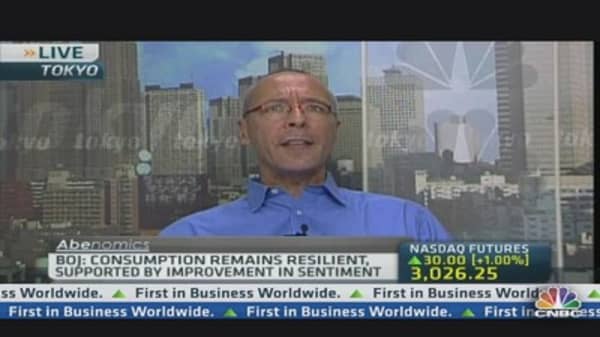A lack of action from the Bank of Japan may not be what the markets want, but some analysts argue that a consistent central bank is exactly what the markets need right now.
The bank voted to maintain its pledge of increasing base money unchanged at an annual pace of 60 trillion to 70 trillion yen ($600-700 billion) on Thursday, and said Japan's economy is starting to "recover moderately," using wording not used by the bank since January 2011, Reuters reported.
(Read More:
JPMorgan Says Its's Still Not Sold on Japan
)
"You want consistency, you don't want erratic movement. They will double the balance sheet, they will continue to pump up liquidity and things are going well, so stay the course," said Jesper Koll, head of Japanese equity research at JPMorgan Securities in Japan.
The Nikkei 225 traded down 0.6 percent immediately after the announcement, but Koll said the dip was a short-term reaction.
"In the short-term there are some traders that will be disappointed by this, but earnings are going to be very good in Japan. The next results season starting in a couple of weeks is going to be spectacular and that's where the Nikkei is likely to catch a bid again," he added.






